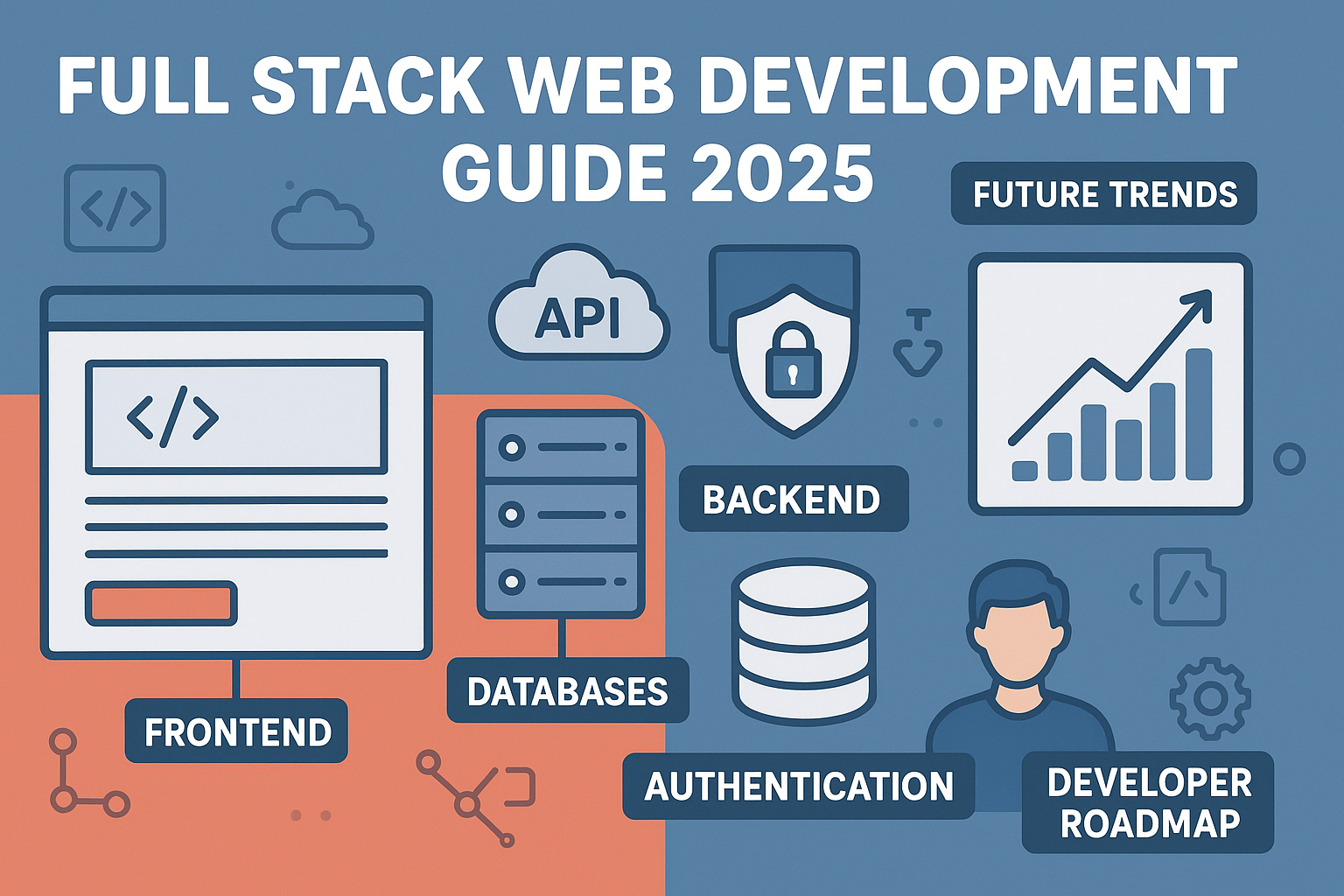CSS (Cascading Style Sheets) is the backbone of modern web design. At The Cubicals, we rely on CSS extensively to give our blogs, coding tools, and guides a professional and consistent look. It helps developers control layouts, colors, fonts, spacing, and responsiveness. Without CSS, web pages would appear plain and unstyled. In this guide, we explain the three primary types of CSS — Inline, Internal, and External — with practical examples and best practices.
What is CSS?
CSS stands for Cascading Style Sheets. While HTML provides the structure of a webpage, CSS defines how that structure should appear to the user. It brings design, interactivity, and flexibility to otherwise static content.
On our platform, we use CSS to make sure every page — whether it’s a blog post, a coding editor, or a learning guide — follows a clean and consistent style. Without it, content would look like plain text with no formatting, which isn’t engaging for readers. From typography and color schemes to spacing and animations, CSS is what makes a website enjoyable to use.
Why CSS Matters?
When building The Cubicals, one of our main goals was to make learning resources not just informative but also visually appealing. That’s where CSS plays a crucial role. It helps us maintain a design that looks modern, works well across devices, and enhances the reading experience.
- Visual Appeal: Proper spacing, colors, and typography make our blogs easier to read.
- Consistency: Stylesheets ensure all sections of the site follow the same theme.
- Separation of Concerns: Content is written in HTML, while design is managed with CSS.
- Responsive Design: Mobile-first CSS ensures our site works smoothly on phones, tablets, and desktops.
- Performance: Reusing external stylesheets reduces duplicate code and improves load time.
Types of CSS
There are three main ways to apply CSS to HTML documents. Each method has its own purpose depending on the size of the project or design requirements:
- Inline CSS — written directly inside the HTML element.
- Internal CSS — written in the
<style>tag inside the<head>. - External CSS — written in a separate
.cssfile and linked to the HTML.
1. Inline CSS
Inline CSS is written directly inside the HTML element using the style attribute. This method is simple but only affects that specific element. For example, if we wanted to highlight a quick note in one of our articles, we might use inline CSS like this:
<p style="color: red; font-size: 20px;">
This is a highlighted note in our blog.
</p>
When to use: Quick fixes, one-off changes, or testing purposes.
Advantages: Easy to apply, no extra files needed, instant results.
Disadvantages: Hard to maintain, not reusable, clutters HTML.
2. Internal CSS
Internal CSS is written inside a <style> tag in the <head> of an HTML page. It applies to all elements on that page only. For example, when we designed our homepage prototype, we used internal CSS to quickly test different styles without creating separate files.
<!DOCTYPE html>
<html>
<head>
<style>
h1 {
color: blue;
text-align: center;
}
p {
font-size: 18px;
}
</style>
</head>
<body>
<h1>Welcome to The Cubicals</h1>
<p>This page uses internal CSS.</p>
</body>
</html>
When to use: Perfect for single-page projects or unique styling.
Advantages: Keeps everything in one file, no need for external requests.
Disadvantages: Doesn’t promote reusability across multiple pages.
3. External CSS
External CSS is written in a separate .css file and linked to an HTML document. This is the method we use most often, since it allows us to manage design across the entire platform from one central stylesheet. If we update the font or background color in our main CSS file, it instantly reflects across all pages of the site.
/* styles.css */
body {
background-color: #f2f2f2;
}
h1 {
color: green;
}
HTML File:
<!DOCTYPE html>
<html>
<head>
<link rel="stylesheet" href="styles.css" />
</head>
<body>
<h1>Welcome to The Cubicals Blog</h1>
<p>This site uses external CSS for consistency.</p>
</body>
</html>
When to use: Ideal for large projects with multiple pages.
Advantages: Clean separation of design and content, reusable, scalable.
Disadvantages: Requires an extra file, slightly more setup.
Comparison Table
| Type | Where Written | Use Case | Best For |
|---|---|---|---|
| Inline CSS | Inside HTML element | Quick fixes | One-time blog tweaks |
| Internal CSS | <style> in <head> | Single-page styling | Prototypes or unique layouts |
| External CSS | Separate .css file | Reusable styling | Entire platform design |
Tips We Follow at The Cubicals
- We use classes and IDs for styles that repeat across multiple pages.
- Our CSS files are modular:
main.cssfor layout,theme.cssfor colors, andresponsive.cssfor mobile design. - Browser developer tools help us test and debug CSS live during development.
- We rely on CSS variables for consistent brand colors.
- All designs follow a mobile-first approach so our content is accessible on every device.
CSS is not just about styling — it defines the entire user experience. At The Cubicals, inline CSS helps us with quick experiments, internal CSS works well for single pages or prototypes, and external CSS is the foundation of our scalable design system. Choosing the right approach depends on your project’s needs, but for long-term growth, external CSS is always the best choice.
Advanced CSS Concepts, Best Practices, and Modern Usage
Once you are comfortable with the basics of CSS, the next step is to explore modern techniques and advanced concepts. At The Cubicals, we make sure our styles are not just functional but also future-ready, scalable, and optimized for performance. Let’s explore some professional CSS strategies that every developer should know.
1. Responsive Design with Media Queries
Today’s users browse from mobile, tablet, and desktop devices. Responsive design ensures that your website adapts to every screen. For example, on our blog pages we use media queries to adjust font sizes, layouts, and images for different devices.
@media (max-width: 768px) {
.blog-card {
flex-direction: column;
text-align: center;
}
}
2. Layouts with Flexbox and CSS Grid
Instead of relying on floats or complex hacks, modern CSS developers use Flexbox and Grid for layouts. For instance, our homepage grid system makes it easy to align multiple blog cards in a clean and responsive way.
.blog-grid {
display: grid;
grid-template-columns: repeat(auto-fill, minmax(300px, 1fr));
gap: 20px;
}
3. CSS Variables for Consistency
CSS Variables allow us to define reusable values (like brand colors or fonts). On our platform, we define a primary and secondary color so the entire site maintains visual consistency.
:root {
--primary-color: #1E3A8A;
--secondary-color: #A23E48;
}
h1 {
color: var(--primary-color);
}
4. Smooth Transitions and Animations
Small details matter. Adding hover effects and smooth transitions makes a website feel more interactive. For example, when a user hovers over a blog card on The Cubicals, the shadow effect smoothly expands.
.blog-card {
transition: transform 0.3s ease, box-shadow 0.3s ease;
}
.blog-card:hover {
transform: translateY(-5px);
box-shadow: 0 8px 20px rgba(0,0,0,0.2);
}
5. Performance & Best Practices
- Use a single external CSS file instead of multiple inline styles.
- Minify and compress CSS to improve loading speed.
- Load fonts and critical styles early for better performance.
- Organize code with comments and follow a naming convention like BEM.
Conclusion
Advanced CSS concepts like Grid, Flexbox, CSS Variables, and Animations help developers build professional websites that stand out. At The Cubicals, we apply these techniques in our blogs, tools, and tutorials to ensure both great design and performance. The goal is not just to style a page, but to craft a memorable user experience.




